Advances in science and material properties have always played a role in the development of building products. Postmodernism fueled the advent of several new building materials including Glass Reinforced Polyester (James Stirling, Olivetti Training Center, c.1972), Insulated Exterior Metal Panel Systems (Richard Meier, Bronx Development Center, c.1979), Dupont’s Fabric Tensile Structures (University of Florida Gainesville, O’Connell Center, c.1980), polycarbonate sheets (Kalwall, et.al.), pre-fabricated brick panel systems, and many other new construction technologies.
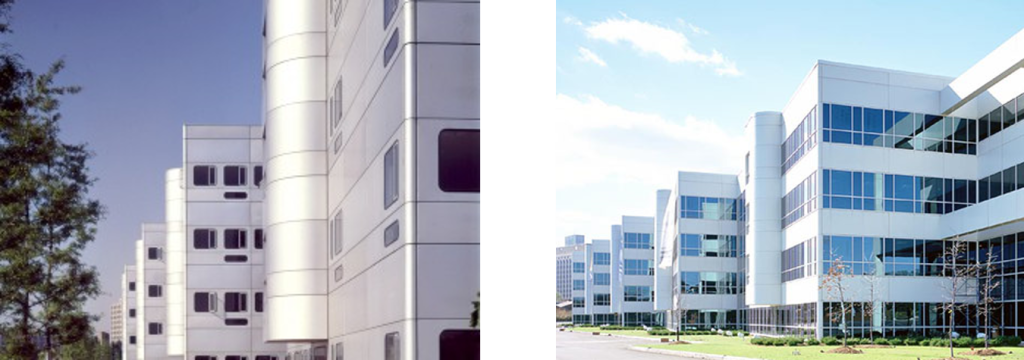
Richard Meier, Bronx Development Center, 1977
Post Modern Building Materials and Life-Cycle
Like any new technology or building material, the life span of postmodern materials is now known but there is a lack of case studies and journalistic papers describing the failure mechanisms, and more importantly, how to repair, retain, or preserve the exterior materials. On one level there is an inherent impermanence of the original materials based on a default decision making process that limited a building’s longevity to a twenty-five (25) year life-cycle. On another level, the façade of the Postmodern building incorporates building systems or individual components that are neither produced nor assembled currently in similar manners due to improvements in technology and building envelope science. In either case, the process and method of building envelope repair could dramatically or minimally impact the exterior character of Postmodern structures.
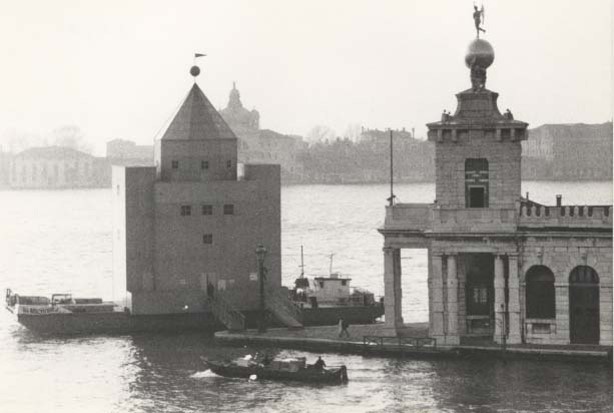
Aldo Rossi, Theatro Delmondo, Venice 1982
There are some Postmodern structures, despite the polarizing opinions regarding the aesthetic values, that are iconographic examples of the high-end of Postmodern style. Included with those structures named above, are the Portland Building (Michael Graves, c. 1984), Piazza d’Italia (Charles Moore, 1982), and Theatro Delmondo, (Aldo Rossi, Venice 1982) to name a few. Rossi’s Theatro Delmondo poses an even more challenging theoretical debate as to whether or not to preserve or repair the structure since the theater was built as a floating temporary stage set.
Rehabilitation and Postmodern materials
The rehabilitation of Postmodern materials is compounded by the lack of physical or chemical stability in the original product (e.g. color fading or material breakdown by UV light); changing urban context and surrounding development; inadequate original construction means and methods, and lack of precedence – Postmodern buildings are just now reaching the end of their design life-cycle. Proposals to improve envelope performance are challenged in finding products that will improve performance and retain the aesthetics of a Postmodern building. Given these challenges, is the proper repair, rehabilitation, or conservation of Postmodern structures to retain the appearance of insubstantial material installed incorrectly? Or should any new work, often entailing proposals for replacing the building facades, to discount the design appearance and fix the problems regardless of the impact.
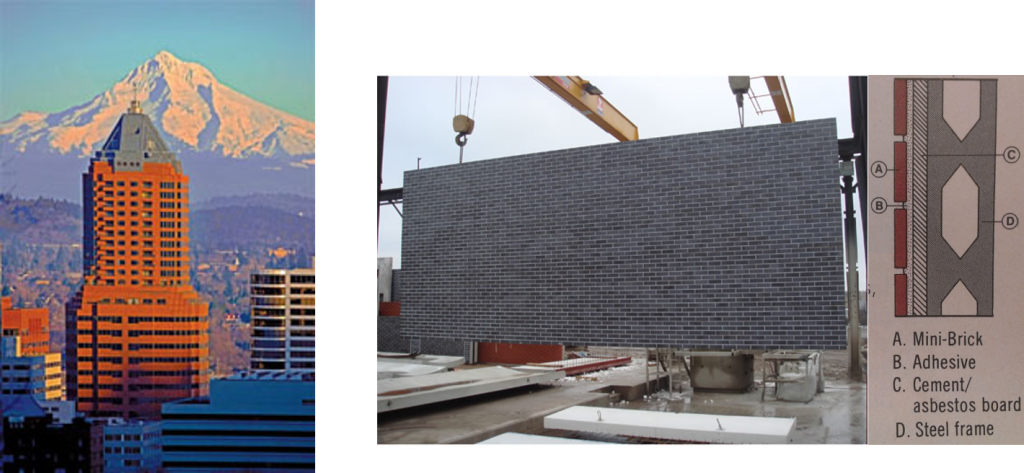
ZGF, Koin Center, 1982
Moving forward, there are precedents set by the early and current challenges associated with mid-century modern structures that can be followed. For example, circa 1960 glass curtain wall upgrades have created methods to retain the exterior appearance while upgrading the thermal efficiency of the system or conversely, left the existing original curtain wall in place and upgrade the mechanical system and distribution system as both more cost effective and more energy efficient over the life of the building. The solutions towards postmodern materials will similarly be led by research, initiative, and innovation. Engaging the manufactures in the dialogue is essential, particularly when replacing a failed product is critical to retaining the building design character.
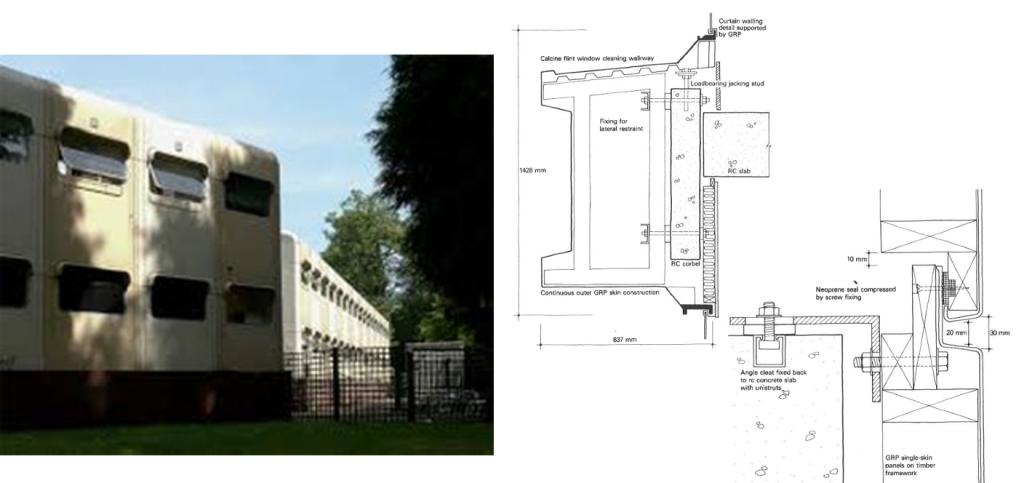
James Stirling, Olivetti Training Center, 1972
Unique Challenges
There are unique challenges with Postmodern buildings, but as is the case with all new materials and systems, developing a strategy of research, methodology, and documentation will result in extending the life-cycle of these provocative structures.
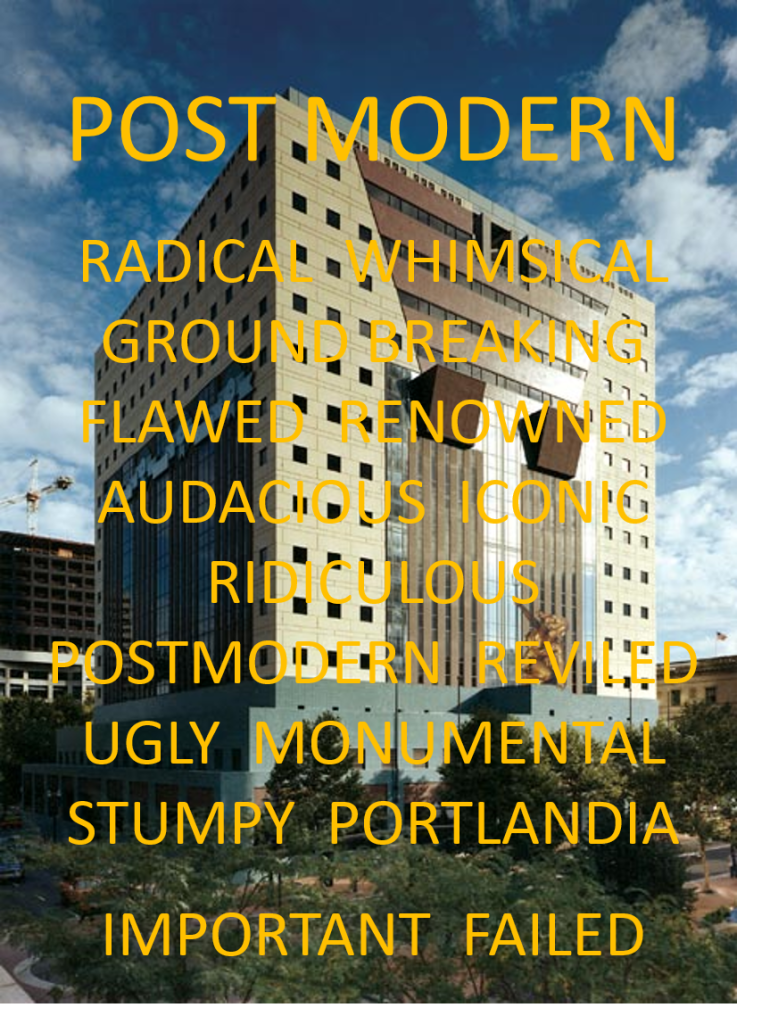
Portland Building
Written by Peter Meijer, AIA, NCARB / Principal
